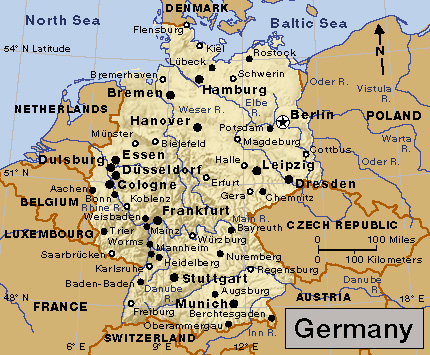Nuremberg << NOO ruhm `behrg` >> (pop. 486,314) is an industrial city in southern Germany. The city’s name is sometimes spelled Nuremburg. Its German name is Nurnberg. The Pegnitz River divides the central part of Nuremberg in half. A wall completed in the 1400’s encircles the city’s center. Allied bombing attacks during World War II (1939-1945) destroyed or damaged many of Nuremberg’s historic buildings. The city’s remaining landmarks include the medieval churches of St. Lawrence and St. Sebaldus, and the restored house of the famous artist Albrecht Dürer. Nuremberg’s many industries include the production of automobiles, beer, bicycles, electrical equipment, office machinery, and toys.

Nuremberg’s founding date is unknown, but the city dates from at least the 1000’s. During the late Middle Ages, Nuremberg became a prosperous trade and cultural city. Nuremberg was a center of Nazi activities in the 1930’s. In 1935, the Nazi-controlled German national assembly approved the anti-Jewish Nuremberg Laws, which were drafted in the city. The laws deprived Jews of citizenship and forbade “Aryan” Germans to marry Jews. From 1945 to 1949, Nuremberg was the site of Allied trials of Nazi war criminals (see Nuremberg Trials).
